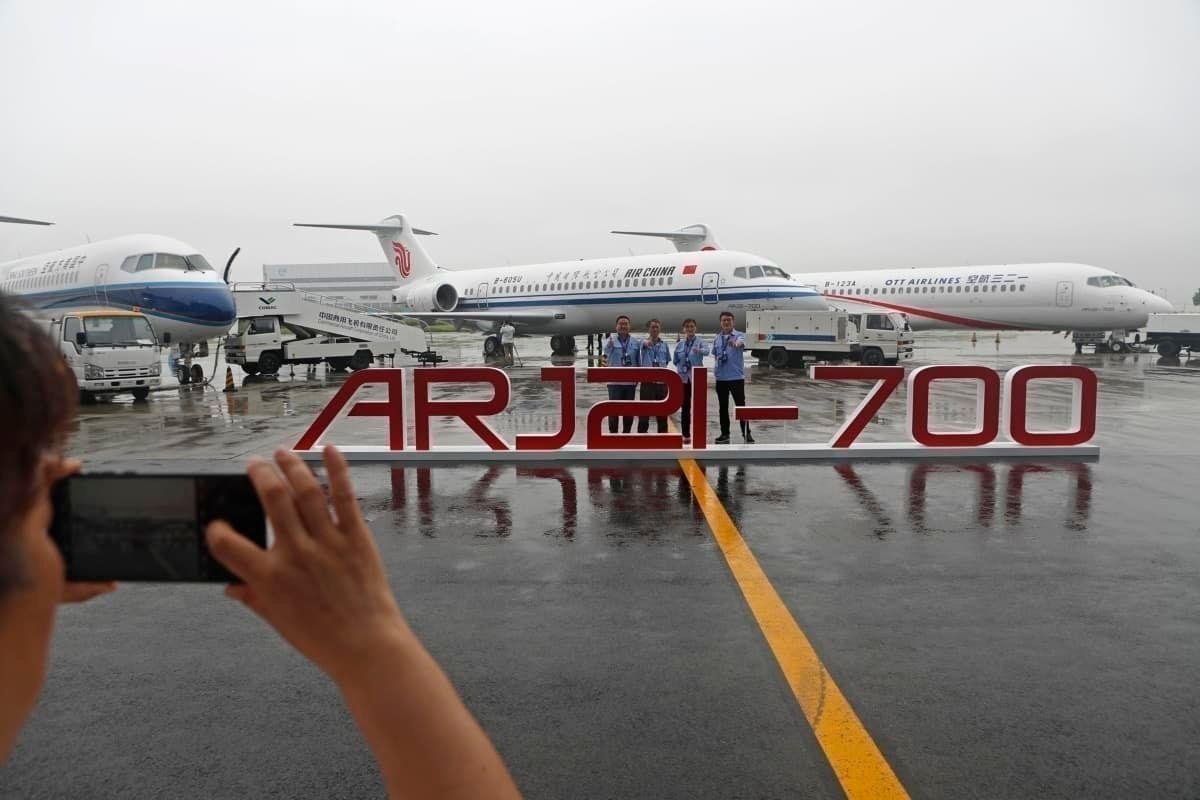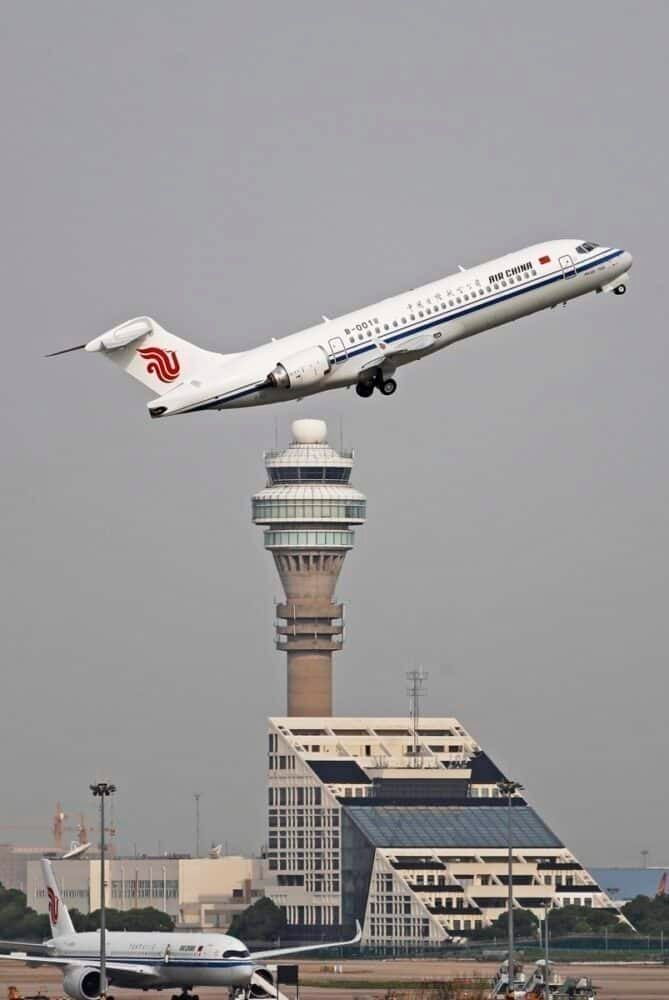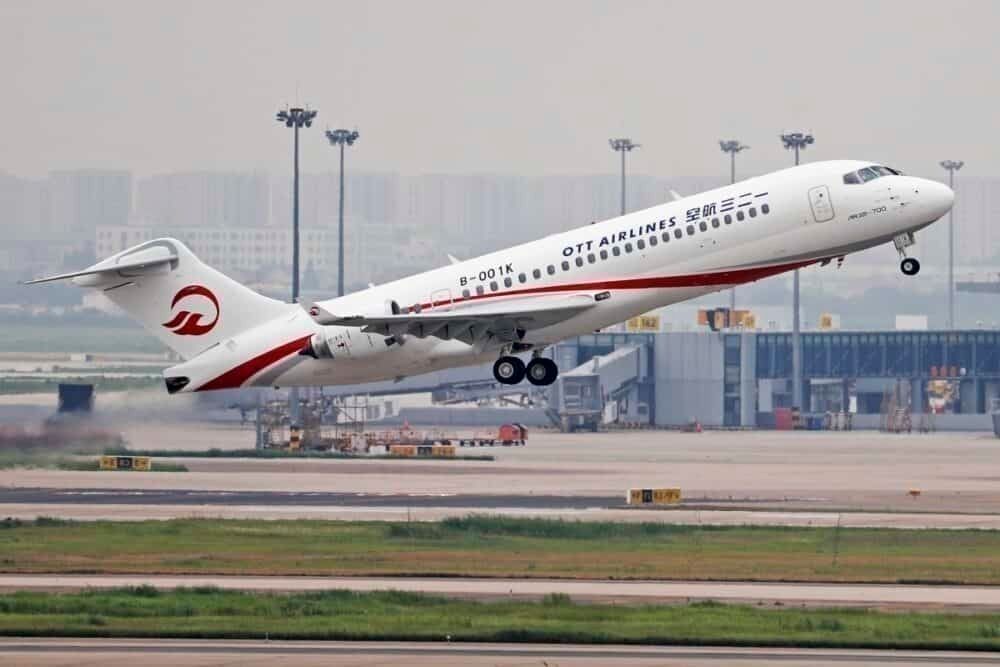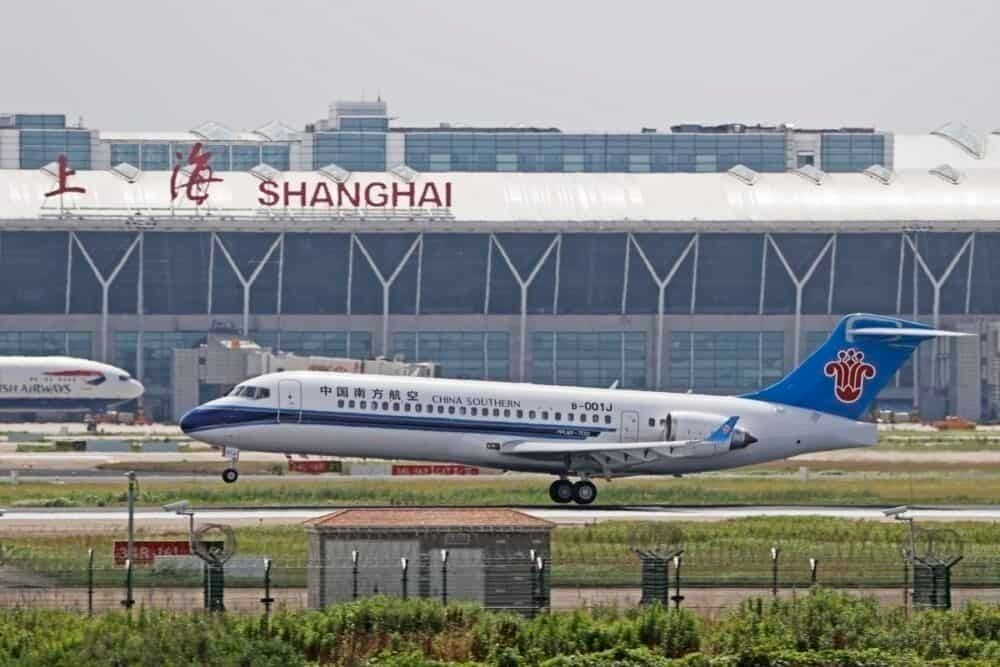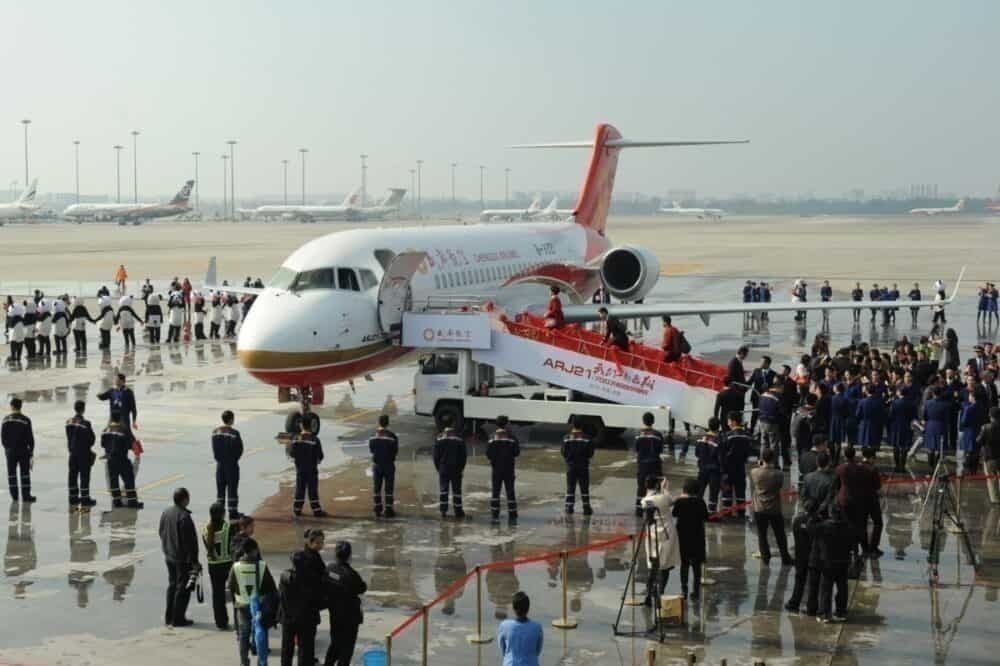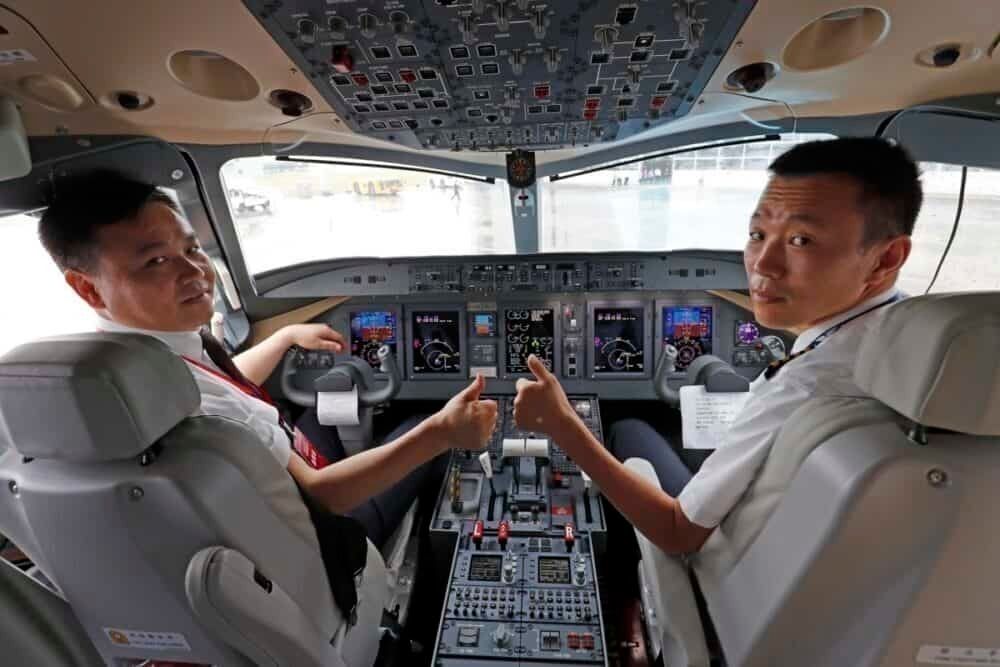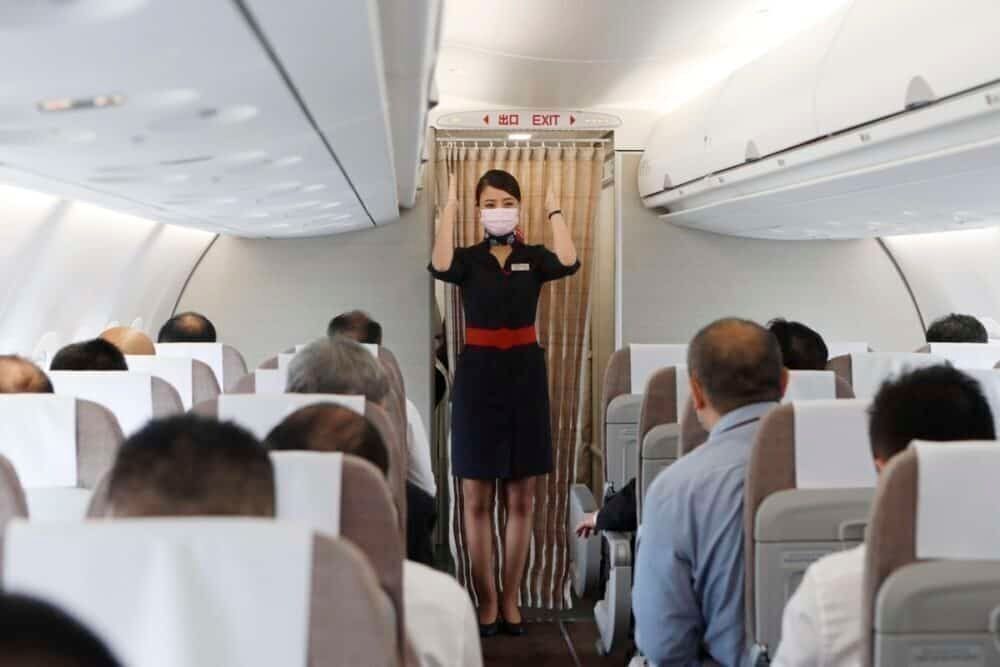Air China, China Eastern, and China Southern have all taken delivery of their first COMAC ARJ21 aircraft as of June 28th. Each of these small jets seat 90 passengers and signify China's attempt to break into the regional commercial aviation market.
The big three Chinese carriers and the ARJ21
Air China, China Eastern, and China Southern all received their first ARJ21 aircraft in Shanghai on Sunday. These jets were incredibly special for COMAC, which stands for the Commercial Aircraft Corporation of China.
Until now, the ARJ21 has only flown for smaller, regional airlines. Now, with these big three carriers adopting them, the ARJ21s will gain some international prominence with major airlines flying them in China. Plus, most likely, a decent number of foreign passengers may end up connecting to destinations in China onboard these aircraft.
In an announcement viewed by Simple Flying, the manufacturer announced that all three aircraft have an all-economy 90 seat configuration. Air China, China Eastern, and China Southern are all anticipated to take three ARJ21s this year.
All three airlines announced simultaneous orders for 35 ARJ21 jets on August 30th, 2019. The deals were valued at over $1.3 billion each, based on a $38 million-per-aircraft price. Although, carriers likely received a decent discount on the aircraft.
Air China
Since December, Air China has been working on integrating the ARJ21 into its fleet. Adding a new aircraft type comes with its own additional challenges. Airlines have to prepare pilots to be trained on the type, set up maintenance for the type, and ensure the logistics are in place to enter the jet into commercial revenue service smoothly.
Per the release, Air China expects to use the ARJ21 to expand its route network. Much of this is likely to be to smaller regional destinations in China that are currently underserved or not on Air China's current route map. Based on the configuration of the jet, Air China will likely avoid putting this aircraft on key domestic links where there would be intense competition and business demand.
Stay informed: Sign up for our daily aviation news digest.
China Eastern's new subsidiary
China Eastern established OTT Airlines, a subsidiary that was set up with the express purpose of flying Chinese-made jets. Alongside the ARJ21, the airline will also operate another COMAC aircraft, the C919.
Based out of Shanghai's Hongqiao airport, the aircraft will not promote much feed to China Eastern's primary operations based out of Shanghai's Pudong, which is also where COMAC maintains an ARJ21 production line. Instead, these planes will help supplement domestic routes and operations.
China Southern Airlines
Much like Air China and China Eastern, China Southern has worked to ensure a smooth induction of the ARJ21 into the airline's fleet. According to COMAC, China Southern has completed preparations for pilot and flight attendant training.
As for where these planes will fly, the airline is looking at Guangzhou, where China Southern has its largest hub and extensive operations. In the early days of ARJ21 service, this will help support reliable operations and help the carrier understand the best ways to operate the aircraft.
Will airlines outside of China buy the ARJ21?
Regional aviation around the world is dominated by the Embraer E170 series, Bombardier Canadair Regional Jet series, the Dash 8 turboprop series, and ATR lineup of turboprops. In this space, there is some development going on. Mitsubishi is working on a regional jet; Embraer has its E-2 and is studying a new turboprop.
The competition is there. However, it is unclear if COMAC has a competitive advantage. For Chinese airlines, buying domestically produced aircraft helps improve the aircraft's international standing. The big three Chinese airlines were the most high-profile customers for the aircraft thus far.
Breaking out of the Chinese market will require a lot of work on COMAC's part. Airlines have to consider things like support systems, production timelines, and reliability of the aircraft. Sometimes, choosing upstart aircraft for their cost has not worked out for some carriers, like Interjet and its Sukhoi Superjet debacle.
The ARJ21 took its maiden flight back in 2008. Since then, the aircraft has not had a high profile presence. Already in operation with local airlines like Chengdu Airlines and Genghis Khan Airlines, the plane hasn't made the same splash it did entering service as the Airbus A220 has.
Adding on a new type is expensive for airlines and many, currently, are not looking to diversify their fleet. This is what works against COMAC in the current sphere. Although, there may be some room for growth as East Asia– especially China– begins to see a rebound in travel.
COMAC believes that, as the ARJ21 enters more extensive commercial service, that it will promote China's civil aviation sphere. While that may be true in China, getting major airlines in the US, Europe, and Australia to sign on to the aircraft type will be a difficult task.
Much of this will also depend on international certification. While the ARJ21 does have certification from the European Aviation Safety Agency (EASA), it does not have approval from the United States Federal Aviation Administration (FAA), which could limit the aircraft's potential if other regulatory agencies also do not certify the aircraft.
What role would the ARJ21 fill?
The ARJ21, which has a striking similarity to the MD-series aircraft, is a regional jet that seats up to 90 passengers. COMAC advertises that the plane can combine and work both on major trunk routes and regional operations that make it suitable for "China's national conditions."
The market for 90-seat jets is currently dominated by the Embraer E-2 series and Airbus A220. Even then, that market is not as large as the one occupied by the Airbus A320 and Boeing 737 families. COMAC could get creative when it comes to finding markets outside of China for the A220.
One potential continent for the jet would include Africa. The air market is growing, and there is room for new carriers to join. Across Boeing, Airbus, and Embraer, none of these manufacturers have established customer bases in the region. If COMAC secures customers here, it could open the door to additional orders and give the aircraft an international standing.
While the delivery of the first ARJ21s to the largest Chinese airlines is a step forward, COMAC still has plenty of work to do to make the type palatable to international customers.
Are you a fan of the COMAC ARJ21? Are you going to fly on an ARJ21 operating under the big three Chinese airlines? Let us know in the comments!

